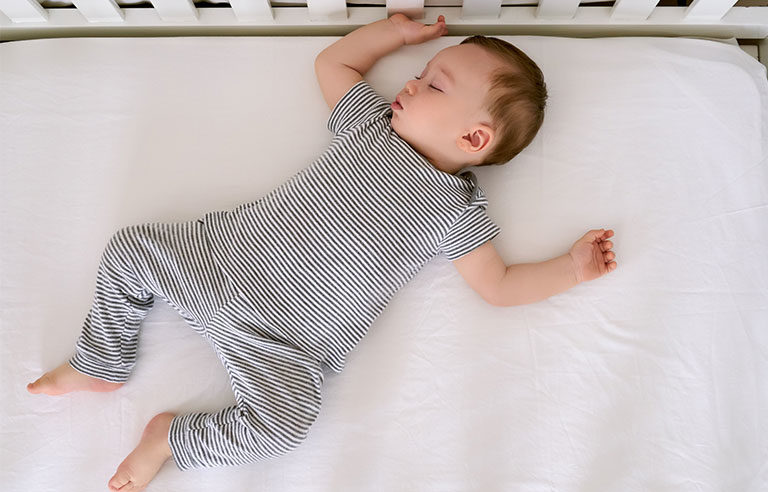CDC to parents: Safe sleep practices can reduce infant deaths

Atlanta — Sleep-related deaths among infants could be reduced by more parents following safe sleep practices recommended by the American Academy of Pediatrics, a recent report from the Centers for Disease Control and Prevention suggests.
Researchers analyzed Pregnancy Risk Assessment Monitoring System data from 2009 to 2015 on infant sleep practices, as well as 2015 data on supine sleep positioning (side and stomach), bed sharing, and use of soft bedding, as well as trends in nonsupine sleep positioning from 2009 to 2015.
Placing a baby to sleep in a position other than on his or her back increases the risk of dying from sudden infant death syndrome (SIDS), unintentional suffocation or strangulation.
The researchers found that about 22 percent of babies were placed in a nonsupine position to sleep and 62 percent of parents reported sleeping with their babies. In addition, 39 percent of parents said they use at least one type of soft bedding in their baby’s crib, including bumper pads (19 percent of parents), plush or thick blankets (about 18 percent), and pillows (7 percent).
Although the number of sleep-related infant deaths has dropped to about 3,500 per year, the decline has leveled off, according to CDC. To lower the risk, AAP recommends infants sleep on their backs, and that parents remove soft objects and loose bedding from infants’ sleep areas. The organization also encourages room sharing rather than bed sharing.
The Safe to Sleep campaign offers tips for parents, grandparents and other caregivers, and health care professionals.
The study was published Jan. 12 in CDC’s Morbidity and Mortality Weekly Report.
Post a comment to this article
Safety+Health welcomes comments that promote respectful dialogue. Please stay on topic. Comments that contain personal attacks, profanity or abusive language – or those aggressively promoting products or services – will be removed. We reserve the right to determine which comments violate our comment policy. (Anonymous comments are welcome; merely skip the “name” field in the comment box. An email address is required but will not be included with your comment.)

